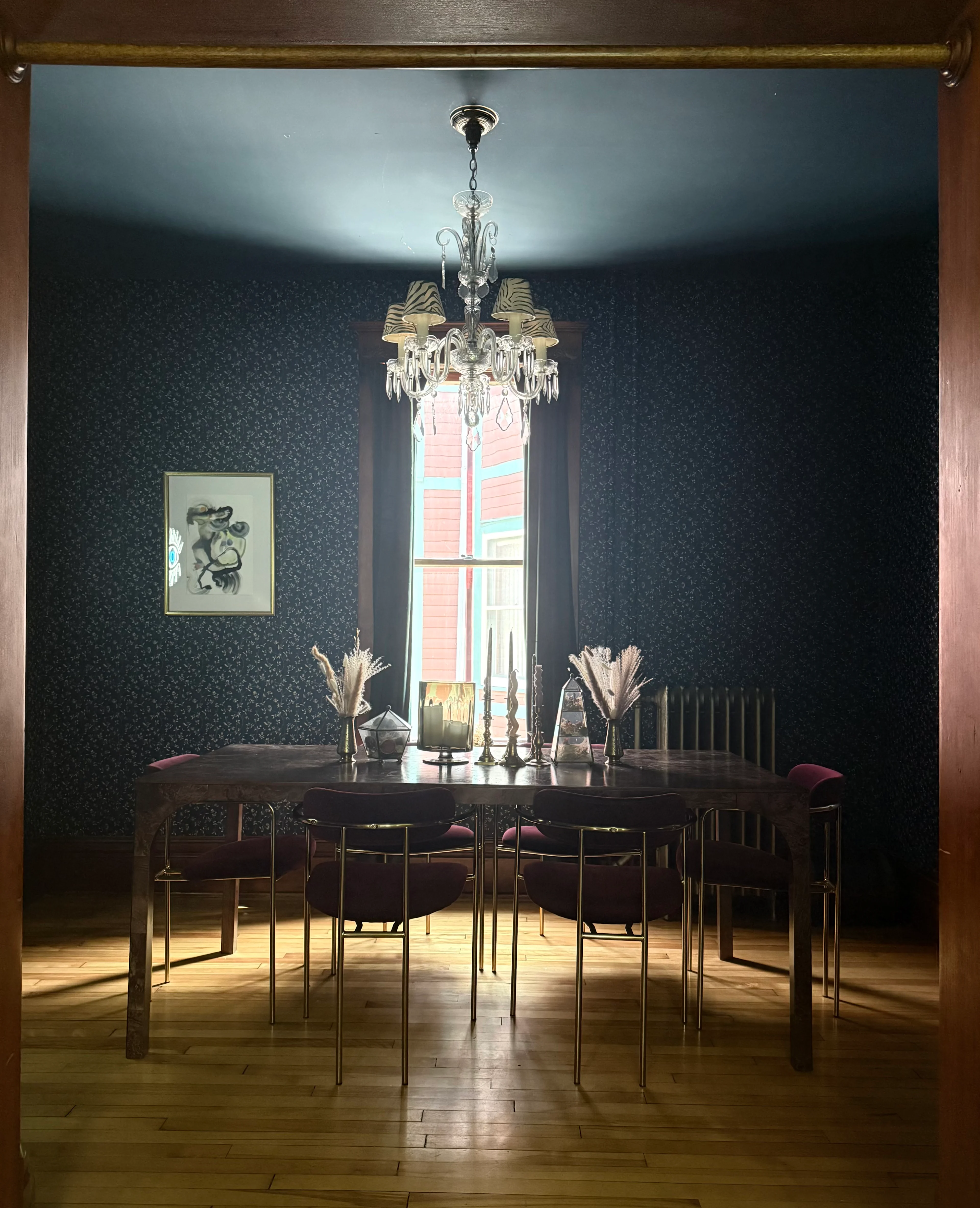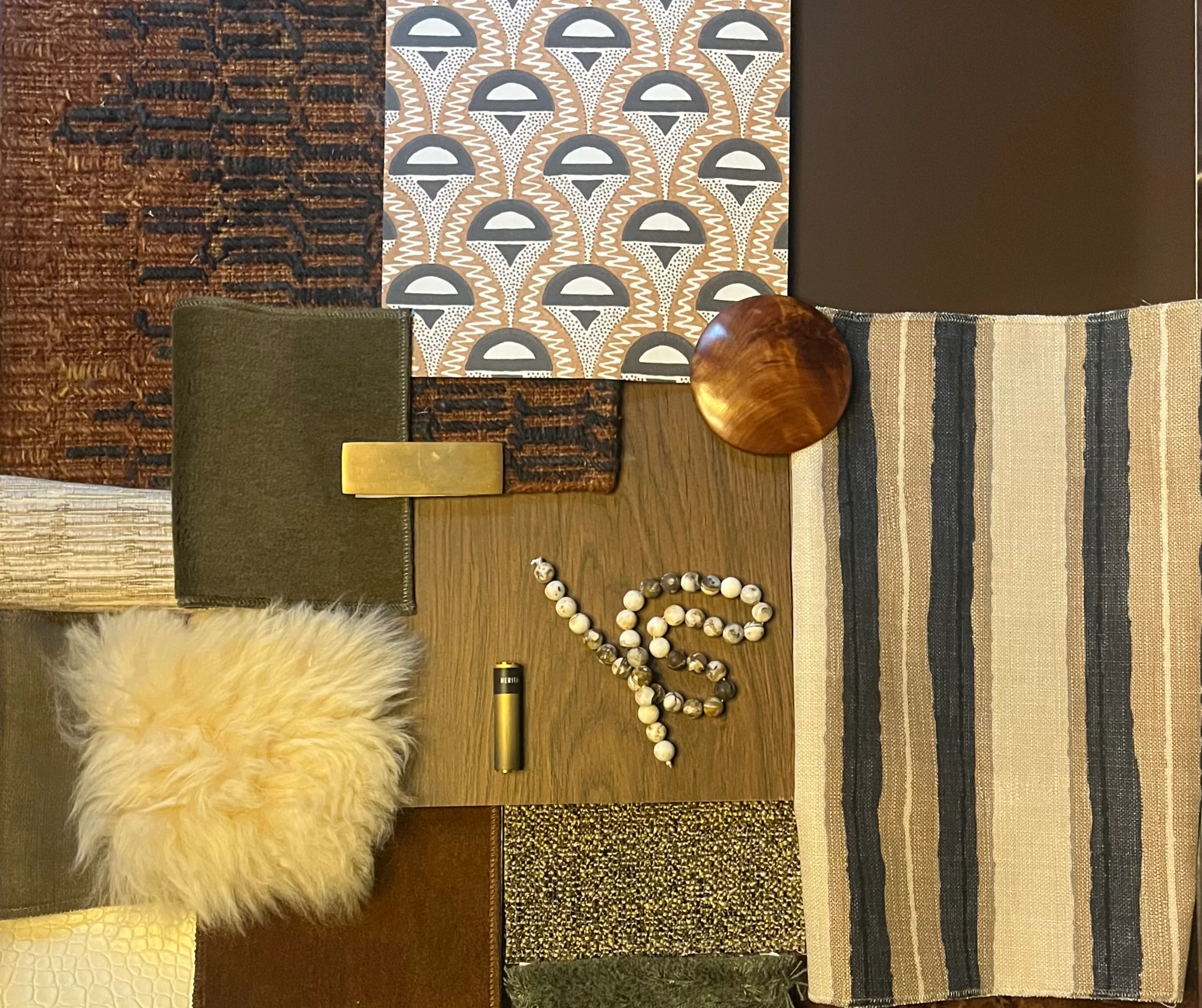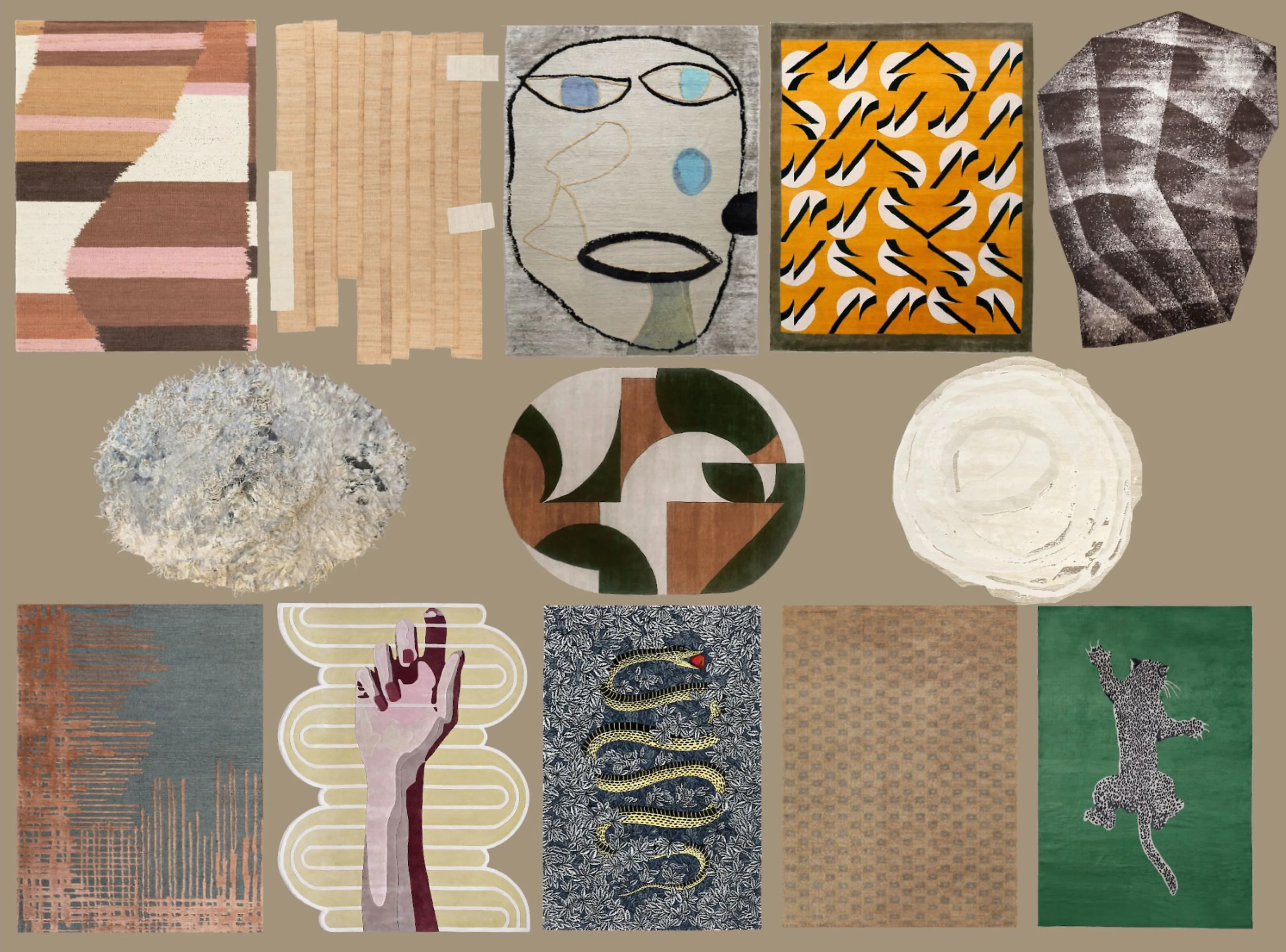There’s something undeniably captivating about a moody room. It wraps you in warmth, invites you to linger, and evokes a sense of quiet drama. Whether you’re rethinking a living room, powder bath, or dining room, the moody look is all about creating atmosphere — and it starts with the right combination of color, texture, and light.

The dining room above is one of my favorite examples of a moody space done right — and it happens to be my own. From the deep-toned walls and ceiling to the sculptural chandelier, aubergine velvet chairs, and unlacquered brass accents, every detail was chosen to create contrast, softness, and a sense of intimacy. The result is a space that feels dramatic yet inviting — the kind of room you want to sink into and stay awhile.
If you’re looking to bring a similar feeling into your own home, here are five essential elements to focus on:
1. Go Bold with Color
Moody interiors are built on deeper hues — think charcoal, espresso, navy, olive, or aubergine. Don’t be afraid to go all-in with dark paint on walls, trim, or even the ceiling. When layered thoughtfully, darker tones can make a space feel more intimate and intentional, not closed-in.
Design tip: Nervous to commit? Start in a smaller space like a powder room or hallway. Even a built-in or a single accent wall can deliver major impact.
2. Layer in Rich Textures
Texture is what gives a moody space its soul. It’s the secret to making a dark palette feel dynamic instead of flat. Bring in tactile materials that invite touch and add depth, such as:
Velvet or mohair upholstery
Heavily woven rugs or jute with dark patterning
Distressed leather
Raw or smoked wood with visible grain
Unlacquered brass, aged bronze, or matte black finishes
In the flat lay below, I pulled together some of my favorite texture-driven materials — rust mohair, olive green velvet, graphic wallpaper, creamy fur, dark-stained wood, and vintage-inspired stripes. Each one adds richness and contrast, building toward a cohesive yet layered look.
3. Play with Lighting
Lighting makes or breaks a moody space. The goal is warm, low, and layered light — nothing too bright or overhead. Think table lamps, wall sconces, candles, and uplighting that create soft pools of illumination and subtle shadow.
Design tip: Always add dimmers if you can, and opt for amber-toned bulbs to keep things soft and inviting.
4. Add Contrast & Movement
Moody doesn’t mean monotone. To keep your space visually engaging, add contrast in tone, pattern, and line. In my own dining room, the dynamic art, striped fabric, and crisp silhouettes all help to break up the saturated color palette. The interplay between smooth and textured, soft and structured, matte and shine gives the room movement and life.
5. Let the Room Breathe
A moody room thrives on balance. Don’t crowd it. Let your materials and colors shine by giving them space. Choose furnishings that have presence but don’t overwhelm. In my dining room, the large table and dark palette are offset by the glow of natural light, exposed wood floors, and the light-reflective quality of unlacquered brass.
The Takeaway
A moody space doesn’t have to be gloomy — it’s cozy, layered, and full of soul. It’s about embracing color and contrast, surrounding yourself with materials that feel good, and letting light set the tone.
If you're craving a room that feels like a retreat from the bright and busy world, moody might just be your match.



